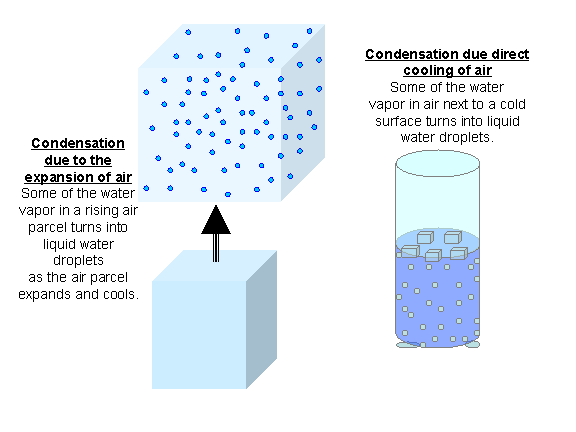
What causes condensation?
Condensation is the formation of liquid drops of water from water vapor. It is the process which
creates clouds, and so is necessary for rain and snow formation as well.
Condensation in the atmosphere usually occurs as
a parcel of rising air expands and cools to the point where some of the water vapor molecules clump
together faster than they are torn apart from their thermal energy.
A very important part of
this process is the release of the latent heat of condensation. This is the heat that was absorbed when
the water was originally evaporated from the surface of the Earth, a process which keeps the Earth's surface climate
much cooler that it would otherwise be if there were no water.
The heat removed from the surface
through evaporation is thereby released again higher up in the atmosphere when clouds form.
Another way in which condensation occurs is on hard surfaces, such as during
the formation of dew. Water condensing on a glass of ice water, or
on the inside of windows during winter, is the result of those glass surfaces' temperature cooling below
the dewpoint of the air which is in contact with them.
|



